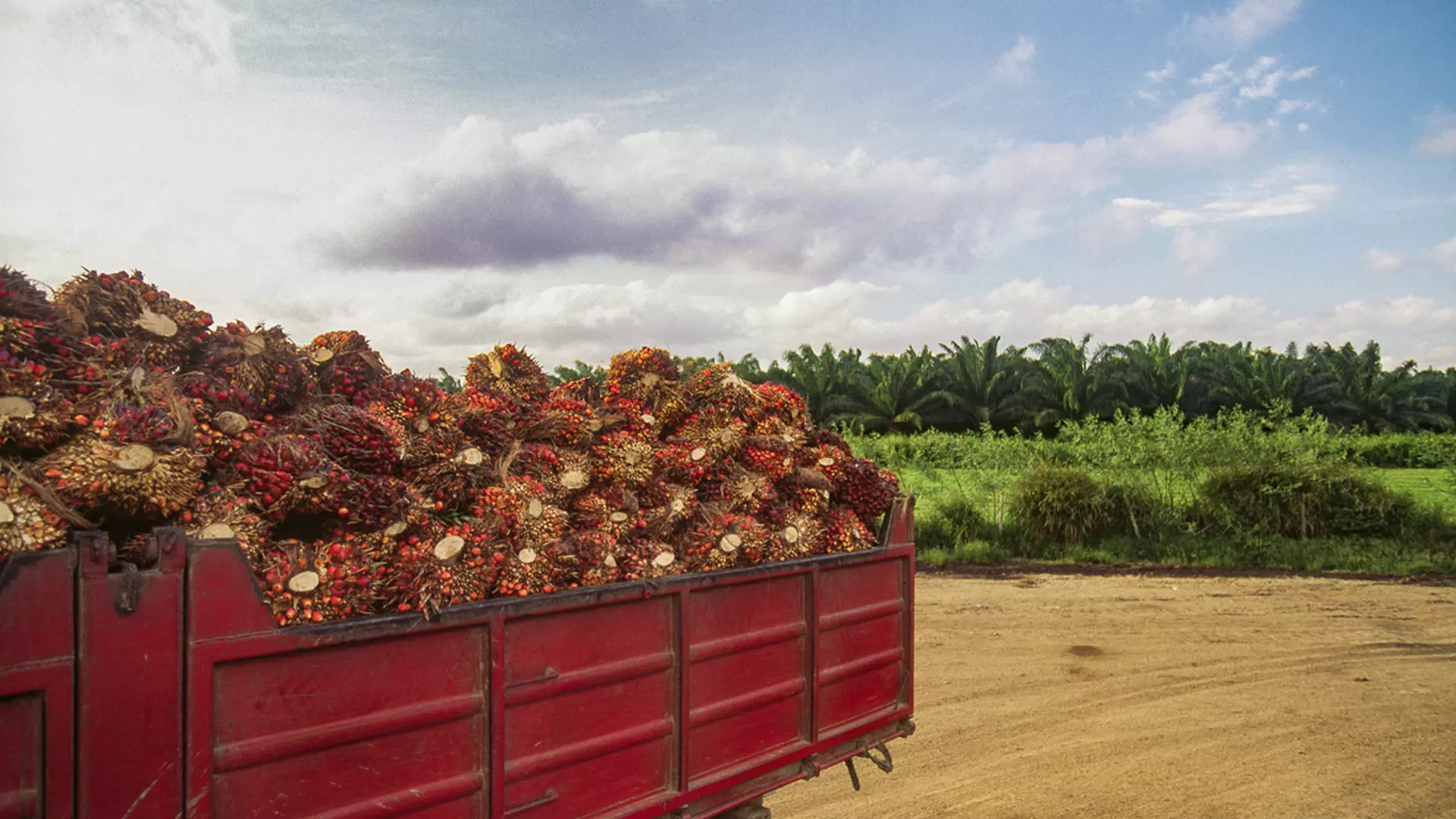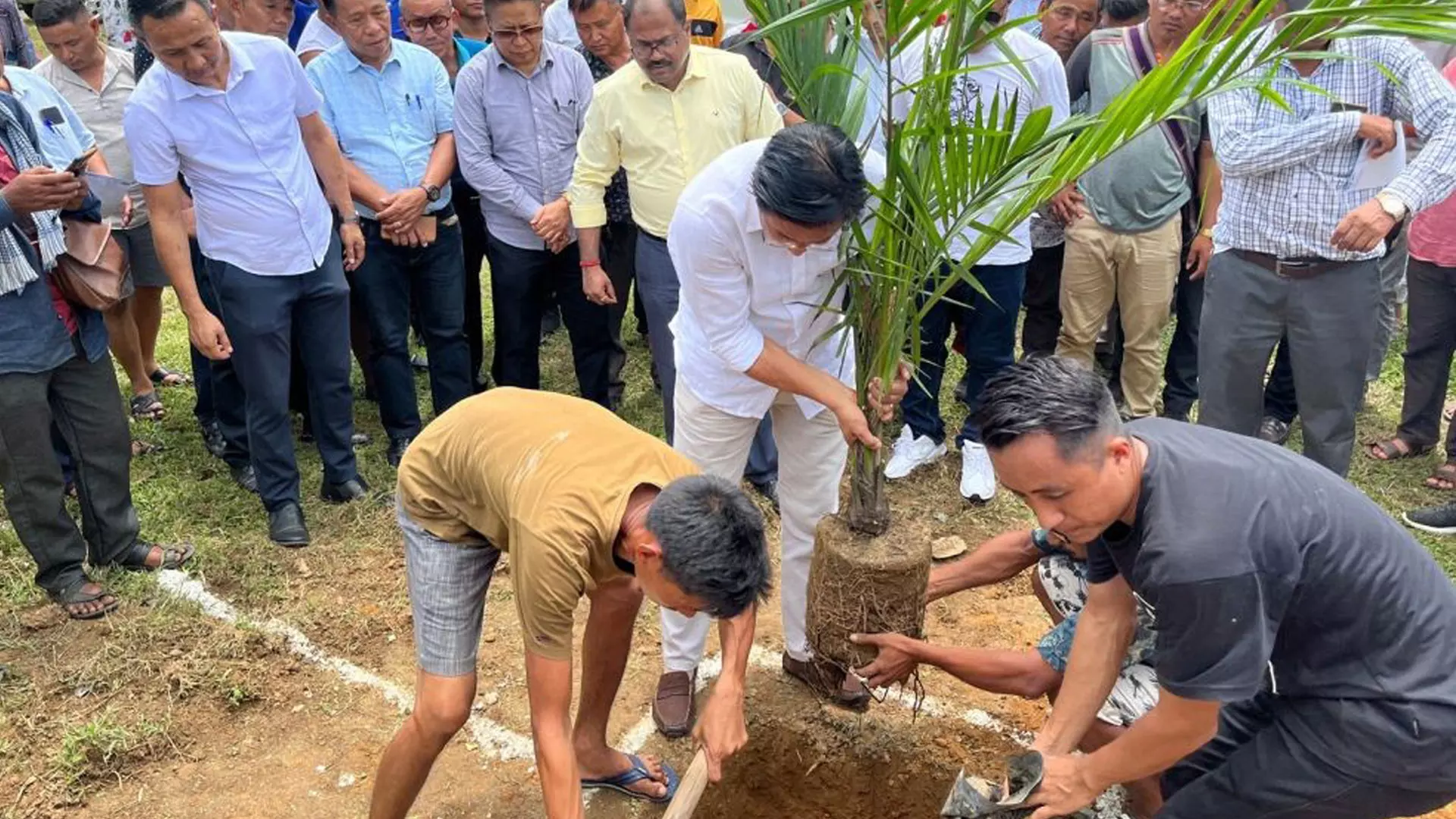
- Home
- India
- World
- Premium
- THE FEDERAL SPECIAL
- Analysis
- States
- Perspective
- Videos
- Sports
- Education
- Entertainment
- Elections
- Features
- Health
- Business
- Series
- In memoriam: Sheikh Mujibur Rahman
- Bishnoi's Men
- NEET TANGLE
- Economy Series
- Earth Day
- Kashmir’s Frozen Turbulence
- India@75
- The legend of Ramjanmabhoomi
- Liberalisation@30
- How to tame a dragon
- Celebrating biodiversity
- Farm Matters
- 50 days of solitude
- Bringing Migrants Home
- Budget 2020
- Jharkhand Votes
- The Federal Investigates
- The Federal Impact
- Vanishing Sand
- Gandhi @ 150
- Andhra Today
- Field report
- Operation Gulmarg
- Pandemic @1 Mn in India
- The Federal Year-End
- The Zero Year
- Science
- Brand studio
- Newsletter
- Elections 2024
- Events
Why India’s palm oil push in Northeast has left Nagaland farmers high and dry
Nkio B is a small village in Nagaland’s Peren district nestled amid pristine low mountain range. The village has a population of 200-odd people as per the last demographic census carried out in 2011. Most residents of Nkio B are poor cultivators and marginal workers, the enumeration survey had found. Given this background, Ditui Zeliang, the village chairman, was happy to meet officials...
Nkio B is a small village in Nagaland’s Peren district nestled amid pristine low mountain range.
The village has a population of 200-odd people as per the last demographic census carried out in 2011. Most residents of Nkio B are poor cultivators and marginal workers, the enumeration survey had found.
Given this background, Ditui Zeliang, the village chairman, was happy to meet officials of the Nagaland agriculture department who claimed to have a plan to turn the fortunes of the farmers. Ditui saw an opportunity when the officials presented a proposal to cultivate oil palm around 2014-15.
The officials affirmed that it is a high-yielding hardy crop that can be harvested throughout the year in an interval of 10-14 days once the trees are ready for harvesting, which they said, generally takes two-and-a-half to three years.
“Around 140 to 145 saplings can be planted in one hectare of land to produce around four tonnes of edible oil in a year,” the officials asserted.
What appeared to be the icing on the cake for the villagers was the incentive the government promised to provide under the National Mission on Oilseeds and Oil Palm (NMOOP).
As per the subsidy package on offer, cultivators are to be provided 85 per cent of the cost of planting materials estimated to be Rs 12,000 per ha and 50 per cent cost of other components like maintenance of crop for four years. The maintenance cost is estimated to be Rs 20,000 per ha per annum.

Around 140 hectares of land in the state was brought under oil palm plantation drive by 2015-16. Photo for representation: iStock
Encouraged by the promised prospects, Ditui and other farmers in Nkio B village set aside 16 hectares of land for the plantation of these oil-bearing trees of alien species.
Many other villages around Nagaland too jumped on the bandwagon. Around 140 hectares of land in the state was brought under oil palm plantation drive by 2015-16.
“I planted palm oil trees on eight hectares. Others planted on another eight hectares. We had been nurturing the plants, spending money from our pockets eagerly waiting for the trees to bear fruits,” Ditui told The Federal.
“In the initial years, we got only around Rs 5,000 to Rs 10,000 per hectare per year though our investment was much more. We did not complain as we were under the impression that the loss would be made up after the harvest,” he said with a clear tinge of disappointment in his voice.
It took four years for the trees to mature, Ditui recalled. But they were happy thinking at last they could reap the benefit, little knowing their ordeal had just begun. “Due to lack of infrastructure and non-existence of processing units in the vicinity, oil could not be extracted within the mandatory time frame of 24 to 48 hours,” Ditui added.
As a result, all their efforts had gone to waste. “We are now considering uprooting the plants to grow arecanut trees,” a devastated Ditui declared.
There are many farmers across the state who met the same fate, stated Bano Megolhusau Haralu, a conservationist from Nagaland.
She said that apart from economic loss to farmers, palm oil cultivation is causing huge destruction of the state’s natural resources such as the forest cover that is integral to the lifestyle and livelihood of the people of the state.
“Each palm oil tree guzzles 250-300 litres of water daily. It is impossible to provide such a huge quantity of water in the hilly mountain terrains of Northeast,” Haralu declared. The trees are adversely impacting the water table in the area.
But the worry isn’t just the depleting water table. Experts are questioning both the ‘quantity’ and ‘quality’ of water that will be available for people. The concern is born out of the fact that oil palm cultivation requires exorbitantly high use of fertilisers and pesticides which inadvertently seep into the soil and mix with underground water.
Endorsing Haralu’s contention director of the Centre for Environment and Climate Action Fund Kamal Kumar Tanti said, “There are several studies to suggest palm oil cultivation leads to forest destruction, land erosion, land pollution and water pollution.”
“These trees also emit toxins that can kill other plants and displace native wildlife,” he added.
Nagaland is not the only Northeastern state facing the brunt of the Centre’s highly ambitious, but little thought-through drive, to boost the production of oilseeds in the country to meet its edible oil requirement.
India is the world’s largest importer of palm oil. The country has moved to a massive reliance on non-native palm oil at the expense of enhancing the production of traditionally used oil crops such as mustard and coconut. India domestically produces 1% of its oil palm requirement, and imports 99 per cent. The countries from which India imports include Indonesia and Malaysia, with an import bill of over Rs 1.50 lakh crore. Northeastern states and the Andaman and Nicobar Islands top the government’s agenda for expansion of palm oil production.
“When an assessment of palm oil potential areas was carried out in 2020, a total of 27.99 lakh hectare was found suitable for cultivation in India, of which 9.62 lakh hectare is in Northeast,” said K Suresh, director, ICAR-IIOPR (Indian Institute of Oil Palm Research).
Currently, it is cultivated on an area of 38,992 hectare in the Northeast, leaving much scope for expansion, he added.
For context, the potential area identified for the exotic monoculture in the region is more than half of Nagaland’s total area of about 16.57 lakh hectares.
To meet the target, state governments in the region are entering into a series of agreements with private companies such as Godrej Agrovet Limited, Patanjali’s Ruchi Soya, 3F Oil Palm Agrotech Private Limited among others for contract farming of palm oil.
Except for Meghalaya, all other states have taken up cultivation in a big way, ignoring potential risks and alarms raised by environmentalists.
Nagaland as of July 2023 has 5,423 hectares of land under oil palm, which is 39-fold growth since 2015. The plantation drive in the region started even before the Indian Council for Agriculture Research (ICAR) did its assessment study in 2020.

State governments in Northeast are entering into a series of agreements with private companies for contract farming of palm oil.
Mizoram was the first to go off the blocks. The cultivation began in the state with the government identifying 66,791 hectares in seven districts as potential areas in 2005, said Tanti.
“Around 26,600 hectares of soil had been planted engaging 10,843 farmers by July 2021,” he added. The number was a significant drop from 14,000 in 2017.
Farmers in the state are now ruing their choice and many have been forced to uproot their plants, said Zion Lalremrauta, secretary of the All Mizoram Farmer's Union.
The maintenance cost of plantation is too high, lack of infrastructure for transporting and processing oil date fruits, excessive water requirements, adverse effects on environment and soil, lack of knowledge of how to grow this foreign species are some of the factors Tanti cited for the failure of the new farming experiment in the region so far.
Mizo farmers also alleged that companies failed to pay compensation stipulated under the Mizoram Oil Palm (Regulation of Production and Processing) Act, 2004.
A similar incident of failed promises prompted farmers in Goalpara district of Assam to rip out over 500 trees recently after a proposed processing unit in the area failed to materialise.
“In the region where land is scarce and cause for many a mutiny, the centre palm-oil drive can be a cause for bigger disaster,” Haralu added.

